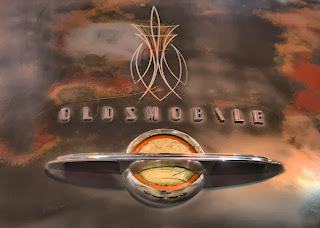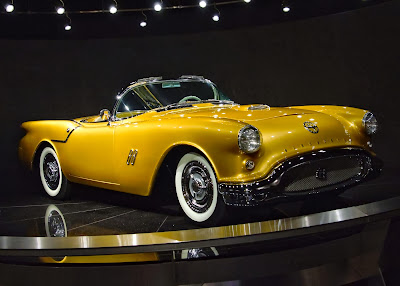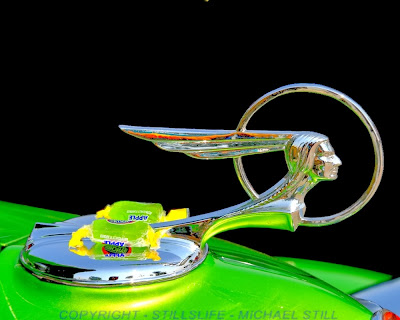I've been asked where it was taken and how did I find this wonderful scene.
If you follow my photography or read prior blogs you realize that many of these discoveries are actually the result of being relentlessly curious and straying away from the well traveled highways.
This exploration was on the many back roads between Las Vegas and Santa Fe, New Mexico. Las Vegas was a major trade center on the Santa Fe Trail from the time of the Spanish conquistadors and is worthy of a weeks worth of exploring and photographing.
Stop for lunch or dinner at Dick's, a local institution with great green chili and cold beer.
The side roads toward Santa Fe run somewhat parallel to I-25 and are a maze of county and state roads. This is not a drive for the impatient, like much of New Mexico, roads tend to stop and start with little signage. Parts of these roads were the early paved part of the Old Santa Fe trail and route 66. Small villages with white washed adobe churches at the base of beautiful mesas are scattered throughout this area. Each village has it's own history and story worth checking out.
This trip was primarily spent in and around Pecos, Glorieta and Rowe.
Along highway 50 outside Pecos, I spotted this wonderfully restored 55 Chevrolet pickup parked beside Greigos , a gas station and restaurant outside of town. A sign proclaimed: " Greigos, Best cheeseburger west of Pecos". When I opened my car door, the smells coming from the kitchen seemed to support their claim.
A few quick shots later, I found myself placing an order for a cheeseburger while I visited with a young man working the counter and a local highway patrolman waiting on his cheeseburger. A bit later, the cook brought out a grease stained white paper bag containing that wonderful burger. This is indeed, a stop destined for any carnivores bucket list.
A conversation about old pickups or cars I might photograph brought up the GMC pickup sitting outside of town on jack stands. I had to back track a bit toward Rowe, and cross over the interstate just past the small log and adobe homestead. This scene instantly spoke to me in it's simplicity and the story it conveyed of that project we all hope to complete.

 I continued on to Santa Fe for a night at the El Rey Inn, a wonderful old motor inn much like it was in the fifties. Dinner with a friend at Tiny's lounge was a perfect end to a great day exploring at little bit more of northern New Mexico. Tiny's is another of those iconic old bars with great Mexican food, and a constantly changing cast of local characters.
I continued on to Santa Fe for a night at the El Rey Inn, a wonderful old motor inn much like it was in the fifties. Dinner with a friend at Tiny's lounge was a perfect end to a great day exploring at little bit more of northern New Mexico. Tiny's is another of those iconic old bars with great Mexican food, and a constantly changing cast of local characters. I've found that Northern New Mexico has become one of my favorite areas to explore back roads and small towns. It is amazing to be in villages that were settled before the pilgrams landed on Plymouth rock.
Much of what makes New Mexico are the friendly and interesting people that really seem to love sharing the stories, history and sights away from the interstates.
Please share your favorite photo sites and experiences.
Have a wonderful adventure.
Michael
More of my photography can be found at: www.stillslife.net




























